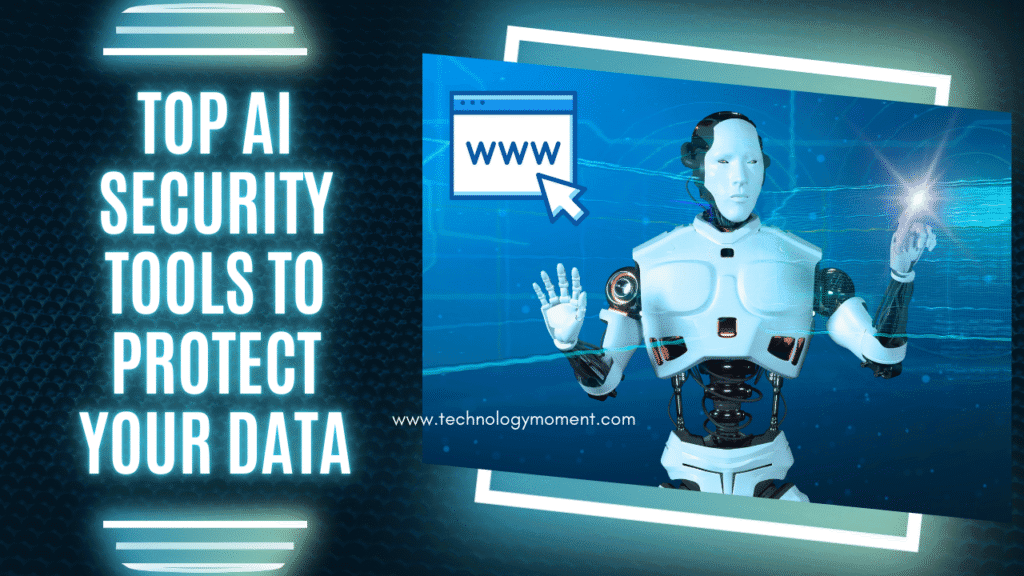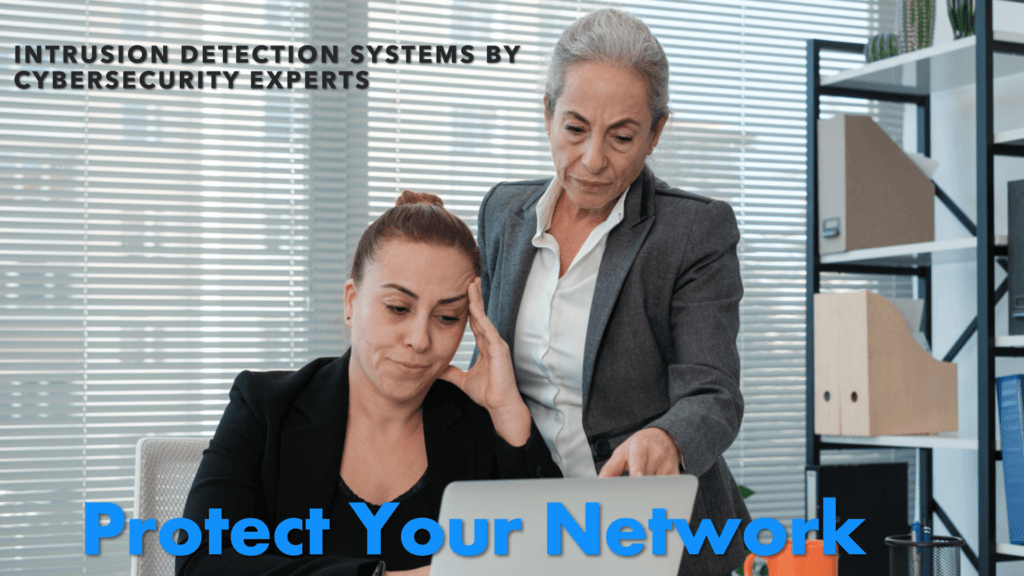Welcome to Technology Moment, where we explore the cutting-edge innovations shaping our digital future. In today’s blog, we dive into the ever-evolving world of security software development, a field that is critical to safeguarding our interconnected systems and data.
As cyber threats become more sophisticated, the demand for skilled security software developers is at an all-time high. This article will guide you through the top skills required to excel in this role in 2025 and provide insights into the growing career opportunities in this dynamic field. Whether you’re an aspiring developer or a seasoned professional, this blog will offer valuable perspectives to help you thrive in a world where cybersecurity is more important than ever.
In today’s digital-first world, security is no longer a luxury; it is an absolute necessity. From personal data stored on smartphones to sensitive financial information safeguarded by global organizations, cybersecurity serves as the backbone of modern technology. At the heart of this defense are security software developers, who craft the digital armor that keeps systems and data safe from an ever-growing list of cyber threats.
As we approach 2025, the need for skilled professionals in this domain has never been more apparent. With technological advancements like cloud computing, IoT (Internet of Things), and AI driving innovation, the potential attack surface for hackers continues to expand. Every application, from e-commerce platforms to healthcare systems, is a potential target, making security software development a vital area of focus.
Moreover, high-profile data breaches have underscored the devastating consequences of weak security. These incidents not only result in financial losses but also erode customer trust and tarnish reputations. Businesses across the globe are investing heavily in proactive measures, and this shift is fueling the demand for experts who can design and implement secure systems.
In this context, the role of security software developers is evolving. No longer confined to creating patches or fixing vulnerabilities, these professionals now play a pivotal role in building systems with security baked in from the ground up. Whether it’s developing encrypted communication tools or creating sophisticated threat detection systems, their contributions shape the future of cybersecurity.
This article delves into the growing importance of security software developers, exploring the skills they need, the challenges they face, and the promising career outlook for 2025. If you’re considering a career in this field or looking to enhance your expertise, this guide will serve as a comprehensive resource to help you navigate the path ahead.
Table of Contents
What is a Security Software Developer?
A security software developer is a specialized professional in the realm of software engineering who focuses on designing, creating, testing, and maintaining secure software systems. Their primary goal is to ensure that the software they develop is resilient against potential threats, vulnerabilities, and cyberattacks.
Key Responsibilities of a Security Software Developer
Security software developers play a multifaceted role that combines traditional software development skills with in-depth knowledge of cybersecurity principles. Here’s an overview of their responsibilities:
- Designing Secure Software Architectures
- They work on creating software systems with robust security frameworks. This includes implementing security-first principles at the design stage to prevent vulnerabilities from the ground up.
- Writing Secure Code
- A security software developer ensures that every line of code is scrutinized to eliminate loopholes that attackers could exploit. Secure coding practices like input validation, proper error handling, and avoidance of unsafe functions are integral to their work.
- Conducting Vulnerability Assessments
- They identify and assess weaknesses in software applications by using automated tools and manual testing. This helps to proactively address vulnerabilities before malicious actors can exploit them.
- Integrating Security Features
- Developers incorporate essential security measures such as encryption, two-factor authentication (2FA), and access controls to protect sensitive data and ensure safe user interactions.
- Collaborating with Cybersecurity Teams
- Security software developers often work closely with cybersecurity analysts and engineers to ensure alignment with broader organizational security goals.
- Maintaining and Updating Software
- They continually update applications to patch vulnerabilities, improve performance, and adapt to the latest security standards.
The Role in Protecting Sensitive Information
In today’s digital age, organizations depend on security software developers to safeguard sensitive data from breaches. From personal information in healthcare systems to financial transactions in banking applications, their work ensures that critical data remains confidential, integral, and available (CIA principles of cybersecurity).
Why Security Software Developers are Vital
Imagine a bank’s online portal being vulnerable to hackers. Without the expertise of a security software developer, that portal could be exploited, leading to stolen data, financial losses, and irreparable reputational damage. These developers are the unsung heroes behind secure and reliable digital platforms, ensuring that systems can withstand both external and internal threats.
Their role is also expanding as technology grows more complex. With advancements in AI, IoT, and cloud computing, security software developers are becoming indispensable in preventing sophisticated cyberattacks.
Why Security Software Development is Crucial
Security software development is not just an IT responsibility; it’s a cornerstone of modern business operations and personal privacy in our increasingly digital world. Let’s dive into why this field is indispensable in 2025.
1. Increasing Cyber Threats
The internet is a double-edged sword, bringing convenience but also exposing vulnerabilities. Cyber threats such as ransomware, phishing, DDoS attacks, and advanced persistent threats (APTs) have grown in complexity and frequency. Hackers are leveraging sophisticated technologies like artificial intelligence (AI) and machine learning (ML) to identify and exploit weaknesses faster than ever before.
Security software development acts as the first line of defense, ensuring that systems can resist these evolving threats. Developers create solutions that not only detect but also proactively block malicious activities.
2. The Cost of Data Breaches
A single data breach can cost organizations millions of dollars, not to mention the loss of customer trust and potential legal repercussions. According to recent statistics, the average global cost of a data breach exceeded $4 million, and this number continues to rise.
For businesses, security software is like an insurance policy—critical for safeguarding sensitive data such as financial records, intellectual property, and customer information. Developers work tirelessly to ensure that the software they create meets the highest security standards, reducing the likelihood of costly breaches.
3. The Growing Internet of Things (IoT)
With IoT devices becoming ubiquitous, from smart home systems to industrial sensors, the attack surface for hackers has expanded exponentially. Many of these devices lack robust built-in security, making them vulnerable to exploitation.
Security software developers play a pivotal role in mitigating these risks by designing secure systems that protect interconnected devices from unauthorized access and manipulation.
4. The Importance of Secure Software in a Connected World
As businesses and individuals adopt cloud-based solutions, remote work, and global collaboration tools, the need for secure software becomes non-negotiable. A single vulnerability in software can jeopardize entire organizations or even critical infrastructure like power grids and healthcare systems.
Security software developers are tasked with embedding security into the software development lifecycle (SDLC), ensuring that applications are secure from the ground up. By integrating security practices early, they prevent vulnerabilities from becoming costly problems down the line.
5. Regulatory and Compliance Requirements
Governments and regulatory bodies worldwide are enforcing stricter cybersecurity standards. Compliance with frameworks like the General Data Protection Regulation (GDPR), Health Insurance Portability and Accountability Act (HIPAA), and others is mandatory for organizations handling sensitive data.
Security software developers ensure that applications adhere to these regulations, protecting businesses from hefty fines and legal battles while also safeguarding user privacy.
6. Public Trust and Reputation Management
In today’s competitive market, a company’s reputation can make or break its success. Security incidents erode trust, and customers are less likely to engage with businesses that have a history of data breaches.
By creating secure software, developers help organizations maintain a strong reputation and build lasting relationships with their customers.
7. The Human Factor
Finally, human error remains one of the most significant causes of cybersecurity incidents. Phishing attacks and poor password practices are common pitfalls. Security software can incorporate features like multi-factor authentication (MFA), automated threat detection, and user education modules to mitigate these risks effectively.
Job Outlook for Security Software Developers in 2025
The job outlook for security software developers in 2025 is exceptionally promising, driven by the increasing reliance on digital systems and the escalating sophistication of cyber threats. Below is a detailed look at the key factors shaping this outlook.
Rising Demand Across Industries
The shift towards digitalization across sectors like finance, healthcare, e-commerce, and government has exponentially increased the need for secure software solutions. Industries that handle sensitive information are particularly vulnerable to data breaches, making security software development a top priority. In 2025, the demand for developers who can build and maintain secure systems is expected to grow significantly.
- Financial Sector: With the rise of online banking and cryptocurrency, financial institutions are investing heavily in cybersecurity to protect assets and customer data.
- Healthcare: The adoption of electronic health records (EHRs) and telemedicine requires enhanced security to comply with privacy regulations and safeguard patient information.
- E-commerce: As online shopping continues to dominate, businesses need secure payment gateways and systems to prevent fraud and breaches.
Global Shortage of Cybersecurity Professionals
According to industry reports, there is a global shortage of skilled cybersecurity professionals. This gap is projected to widen by 2025, creating lucrative opportunities for those with expertise in security software development. Governments and organizations worldwide are working to address this shortage, further emphasizing the importance of this role.
Projected Job Growth
The U.S. Bureau of Labor Statistics (BLS) reports that jobs in information security are expected to grow much faster than the average for other occupations. For security software developers specifically, the growth trajectory aligns closely with the increasing reliance on technology and the proliferation of cyber threats.
- Annual Growth Rate: Some projections estimate a growth rate of 33% or higher in cybersecurity roles through 2030, with software security being a key component.
- Job Security: Unlike some tech roles that face automation risks, security software developers are indispensable due to the complexity and ever-changing nature of cyber threats.
Driving Factors for Growth
Several factors contribute to the strong job outlook for security software developers:
- Increased Cyber Threats: Cybercriminals are employing advanced methods such as ransomware and AI-driven attacks, necessitating innovative security measures.
- Regulatory Compliance: Governments worldwide are enforcing stricter data protection regulations like GDPR, HIPAA, and CCPA. Organizations must comply with these laws, creating demand for professionals who understand regulatory frameworks.
- Remote Work: The surge in remote work has expanded the attack surface for organizations, highlighting the need for robust security software.
High Earning Potential
Security software developers enjoy competitive salaries due to their specialized skill set. In 2025, compensation packages are expected to remain lucrative, reflecting the critical role these professionals play in protecting businesses and individuals.
- Entry-Level Salaries: Competitive starting salaries for fresh graduates entering the field.
- Experienced Professionals: With experience, developers can command six-figure salaries, especially in high-demand industries like finance and tech.
Remote and Hybrid Work Opportunities
The shift to remote and hybrid work environments has made it easier for security software developers to work from anywhere. Companies are adopting flexible working arrangements to attract top talent, making the profession more appealing.
Top Skills Every Security Software Developer Needs in 2025
As cyber threats grow in complexity and frequency, security software developers must be equipped with a comprehensive skill set to address the dynamic challenges of 2025. Below is a detailed breakdown of the top skills that will set these professionals apart in the evolving cybersecurity landscape.

Programming Skills
Programming forms the foundation of security software development. Mastery of programming languages allows developers to create secure software, identify vulnerabilities in code, and build robust defense mechanisms.
- Python: Known for its versatility, Python is widely used for scripting, automating tasks, and developing security tools.
- Java and C++: These languages are essential for building enterprise-level applications and operating systems where security is paramount.
- JavaScript: Critical for securing web applications, especially against common vulnerabilities like cross-site scripting (XSS).
- Go and Rust: Emerging languages prized for their security-focused features and memory safety.
Knowledge of Cybersecurity Principles
A solid understanding of cybersecurity principles is non-negotiable for developers tasked with creating secure systems. This includes:
- Encryption: Implementing strong cryptographic techniques to protect sensitive data.
- Authentication Mechanisms: Designing robust systems for verifying user identities, such as multi-factor authentication (MFA).
- Threat Detection: Developing methods to identify and neutralize threats in real-time.
Application Security
Modern applications—whether web-based, mobile, or desktop—are prime targets for attackers. Developers need expertise in:
- Secure Coding Practices: Writing code that minimizes vulnerabilities like SQL injection and buffer overflows.
- Vulnerability Assessment: Regularly testing and patching applications to address security gaps.
- OWASP Top Ten: Familiarity with the top ten most critical web application security risks, as identified by OWASP (Open Web Application Security Project).
Threat Modeling and Risk Analysis
Developers must anticipate potential threats and assess risks to preempt attacks. This involves:
- Identifying Threat Vectors: Pinpointing areas in software where breaches might occur.
- Designing Mitigation Strategies: Crafting measures to address vulnerabilities before they can be exploited.
Penetration Testing
Penetration testing, often referred to as ethical hacking, helps developers uncover weaknesses in their systems. Key skills include:
- Using Penetration Testing Tools: Familiarity with tools like Metasploit, Burp Suite, and Kali Linux.
- Simulating Attacks: Mimicking real-world attack scenarios to evaluate system defenses.
Cloud Security
With the rise of cloud computing, securing cloud environments is critical. Developers need to be adept at:
- Data Protection: Implementing encryption and access controls to safeguard cloud-stored information.
- Understanding Shared Responsibility Models: Knowing which security aspects are handled by cloud providers and which fall under the user’s domain.
- Securing APIs: Ensuring APIs used in cloud systems are not susceptible to attacks.
Networking Fundamentals
A deep understanding of network protocols and architecture is essential for securing systems that rely on interconnected devices. Developers should focus on:
- Firewalls and Intrusion Detection Systems (IDS): Configuring tools that monitor and protect networks.
- Secure Communication Protocols: Implementing protocols like HTTPS and SSL/TLS.
Compliance and Regulatory Knowledge
Security software developers must ensure their solutions align with legal and industry standards. This requires knowledge of:
- GDPR (General Data Protection Regulation): For protecting user data in compliance with European laws.
- HIPAA (Health Insurance Portability and Accountability Act): Essential for securing healthcare data.
Soft Skills: Communication and Problem-Solving
- Collaboration: Working effectively with cross-functional teams, including security analysts and IT administrators.
- Problem-Solving: Quickly identifying and resolving security issues under pressure.
How to Stay Ahead in Security Software Development
The field of security software development is constantly evolving as new cyber threats emerge and technologies advance. Staying ahead in this competitive and dynamic domain requires a proactive approach to learning, skill enhancement, and professional growth. Here’s a detailed breakdown of how to maintain a competitive edge as a security software developer:
1. Pursue Relevant Certifications
Certifications are crucial for validating your skills and staying up-to-date with industry standards. They not only boost your credibility but also demonstrate your commitment to staying current in the field. Some highly regarded certifications include:
- Certified Information Systems Security Professional (CISSP): Offers expertise in designing and managing security programs.
- Certified Ethical Hacker (CEH): Equips you with skills to think like a hacker and identify vulnerabilities.
- CompTIA Security+: A beginner-friendly certification covering essential security principles.
- Certified Secure Software Lifecycle Professional (CSSLP): Focuses on building secure software from the ground up.
2. Embrace Continuous Learning
The fast-paced nature of cybersecurity demands that developers stay ahead of the curve. Continuous learning is essential to keep up with emerging technologies, tools, and best practices. Here’s how you can do it:
- Online Courses and Platforms: Websites like Coursera, Udemy, and Pluralsight offer courses on topics like penetration testing, cloud security, and DevSecOps.
- Industry Publications and Blogs: Follow cybersecurity blogs, news sites, and journals to stay informed about the latest trends.
- Webinars and Conferences: Participate in industry events like Black Hat, DEF CON, and OWASP Global AppSec to gain insights and network with experts.
3. Develop a Habit of Networking
Building relationships with professionals in the cybersecurity community can open doors to new opportunities and keep you informed about the latest developments.
- Join Professional Communities: Organizations like (ISC)², OWASP, and ISACA provide access to industry experts and resources.
- Participate in Forums and Groups: Platforms like LinkedIn, Reddit, and Discord host active groups where you can share knowledge and seek advice.
- Attend Hackathons and Meetups: Engaging in these events allows you to collaborate with peers, showcase your skills, and learn from others.
4. Stay Updated on Emerging Threats
Cybersecurity is a race against time, where staying ahead of attackers is the ultimate goal. To do this, you must regularly monitor and analyze emerging threats and vulnerabilities.
- Threat Intelligence Platforms: Use tools like Recorded Future or ThreatConnect to stay informed about global threat landscapes.
- Subscribe to Security Alerts: Platforms like CVE (Common Vulnerabilities and Exposures) and US-CERT provide regular updates on vulnerabilities.
- Simulate Real-World Scenarios: Practice detecting and mitigating attacks in controlled environments to refine your skills.
5. Master Advanced Tools and Technologies
To stay competitive, familiarize yourself with cutting-edge tools and frameworks used in the industry. These include:
- Penetration Testing Tools: Master tools like Metasploit, Burp Suite, and Nmap.
- Cloud Security Platforms: Learn to secure cloud environments with tools like AWS Security Hub and Microsoft Azure Sentinel.
- Automation Tools: Leverage tools like Jenkins and Ansible for DevSecOps practices to integrate security into development pipelines.
6. Focus on Soft Skills
While technical expertise is paramount, soft skills are equally essential for career growth. Security software developers often work in teams and need to communicate effectively with non-technical stakeholders. Key soft skills include:
- Collaboration and Teamwork: Work seamlessly with other developers, IT teams, and managers.
- Problem-Solving: Think critically and creatively to address complex security challenges.
- Adaptability: Be open to change as technologies and threats evolve.
7. Gain Practical Experience
Hands-on experience is invaluable in cybersecurity. Employers often prioritize candidates with real-world experience over those with theoretical knowledge.
- Internships: Secure internships with companies focusing on security software development.
- Personal Projects: Build and secure your own applications or participate in open-source security projects.
- Bug Bounty Programs: Platforms like HackerOne and Bugcrowd allow you to practice ethical hacking while earning rewards.
8. Stay Compliant with Industry Standards
Familiarity with regulations and compliance frameworks is critical to building secure software that adheres to legal requirements. Stay informed about:
- GDPR (General Data Protection Regulation): For protecting user privacy.
- HIPAA (Health Insurance Portability and Accountability Act): For securing healthcare data.
- PCI DSS (Payment Card Industry Data Security Standard): For securing payment data.
Challenges in Security Software Development
Security software development is a dynamic and ever-evolving field, but it doesn’t come without its fair share of challenges. Developers in this space face unique obstacles that test their technical expertise, creativity, and problem-solving skills. Here’s a detailed look at the most pressing challenges in security software development:
1. The Rapidly Changing Threat Landscape
One of the most significant challenges is staying ahead of cybercriminals. Cyber threats are constantly evolving, with hackers employing sophisticated tactics, tools, and techniques to exploit vulnerabilities. From zero-day exploits to advanced persistent threats (APTs), the sheer variety and complexity of attacks require developers to anticipate potential risks and design systems that are resilient against them.
- Example: New malware strains are developed daily, making traditional antivirus solutions insufficient. Developers must integrate real-time threat detection and mitigation into their software.
- Impact: Without proactive measures, software could become outdated quickly, leaving it vulnerable to breaches.
2. Balancing Security and Usability
Users demand secure software, but they also want it to be user-friendly. Striking the right balance between security features and ease of use is a persistent challenge. Overcomplicating security measures, such as requiring multiple layers of authentication, can frustrate users and discourage adoption.
- Example: Multi-factor authentication (MFA) is effective but can sometimes be inconvenient for end-users. Developers must design seamless MFA processes, like biometric authentication, to improve the user experience.
- Impact: Poor usability can lead to users bypassing security measures, undermining the software’s effectiveness.
3. Managing Time and Resources Effectively
Security software development often operates under tight deadlines and limited budgets. Organizations expect high-quality solutions that are both secure and delivered quickly. However, rushing development can result in overlooked vulnerabilities, leading to costly breaches down the line.
- Example: A startup developing a secure payment application may face pressure to launch quickly. This might lead to insufficient testing or incomplete threat modeling.
- Impact: The software could be prone to attacks if vulnerabilities are not identified and fixed before release.
4. Handling Legacy Systems and Technical Debt
Many organizations still rely on outdated legacy systems, which pose significant security risks. Integrating new security software with these systems can be challenging, as older platforms often lack the necessary infrastructure or compatibility.
- Example: A financial institution using legacy mainframe systems may struggle to implement modern encryption protocols due to outdated hardware and software limitations.
- Impact: This can result in gaps in security, leaving the organization exposed to potential breaches.
5. Ensuring Compliance with Regulations and Standards
Security software must comply with various laws and standards, such as GDPR, HIPAA, and PCI DSS. Keeping up with these regulations, which vary by industry and region, is a daunting task for developers. Additionally, failing to meet compliance requirements can result in legal penalties and reputational damage.
- Example: A healthcare application must meet HIPAA standards for protecting patient data, requiring developers to implement stringent security measures for data encryption and access control.
- Impact: Non-compliance can lead to heavy fines and loss of trust from users and stakeholders.
6. Addressing the Insider Threat
While external cyberattacks grab headlines, insider threats—whether intentional or accidental—pose a significant challenge. Employees or contractors with access to systems can inadvertently introduce vulnerabilities or maliciously exploit their access.
- Example: A developer might unintentionally include hardcoded passwords in the source code, which can be exploited by attackers.
- Impact: Insufficient controls for insider access can lead to data breaches or unauthorized system changes.
7. Adapting to Emerging Technologies
The rise of technologies like AI, IoT, and blockchain introduces new security challenges. Developers must stay ahead of the curve to secure these technologies, which come with their unique vulnerabilities.
- Example: IoT devices often have limited processing power, making it difficult to implement strong encryption protocols.
- Impact: Failure to address these challenges can lead to widespread vulnerabilities, especially in interconnected systems.
8. Testing and Debugging Security Features
Security features must be rigorously tested to ensure they work as intended without introducing new vulnerabilities. However, comprehensive testing requires time, expertise, and resources, which are often limited.
- Example: Penetration testing may uncover hidden vulnerabilities, but addressing them could delay the product release.
- Impact: Inadequate testing increases the likelihood of launching software with critical security flaws.
9. Skills Gap in Cybersecurity
The cybersecurity field faces a skills shortage, making it difficult for organizations to find qualified security software developers. As a result, existing teams are often overburdened, leading to burnout and potential oversights in development.
- Example: A small team tasked with developing a secure e-commerce platform may lack expertise in advanced threat modeling, increasing the risk of vulnerabilities.
- Impact: A lack of skilled professionals can compromise the quality of security solutions.
10. Evolving Attack Vectors in Cloud and Remote Work Environments
The shift to cloud computing and remote work introduces new attack vectors, such as misconfigured cloud storage or unsecured remote access points. Developers must design software to account for these challenges while maintaining flexibility and scalability.
- Example: A cloud-based SaaS application must ensure secure API integrations to prevent unauthorized access.
- Impact: Neglecting cloud-specific threats can lead to data breaches and service disruptions.
Tools and Technologies for Security Software Developers in 2025
The field of security software development is rapidly evolving, and staying ahead requires mastery of the latest tools and technologies. As cyber threats become more sophisticated, developers must rely on cutting-edge solutions to safeguard systems, applications, and data. Here’s a detailed look at the essential tools and technologies security software developers will use in 2025:
1. Penetration Testing Tools
Penetration testing tools, also known as pentesting tools, are critical for identifying vulnerabilities in software and networks. They help developers simulate cyberattacks to find and fix weaknesses before hackers exploit them. In 2025, some of the most prominent tools include:
- Metasploit Framework: A popular open-source tool for penetration testing that provides developers with various exploits and modules for testing security measures.
- Burp Suite: Widely used for web application security testing, enabling developers to identify vulnerabilities like SQL injections and cross-site scripting (XSS).
- Nmap (Network Mapper): Essential for scanning networks and discovering open ports, services, and potential vulnerabilities.
2. Static and Dynamic Application Security Testing (SAST/DAST) Tools
Security software developers will increasingly rely on SAST and DAST tools to identify flaws in their code and applications. These tools integrate directly into the software development lifecycle (SDLC), allowing developers to fix security issues during development.
- SonarQube: A powerful tool for static analysis that detects vulnerabilities in the codebase and ensures adherence to secure coding practices.
- OWASP ZAP (Zed Attack Proxy): A dynamic testing tool used to find vulnerabilities in running applications, particularly web apps.
3. Cloud Security Platforms
As cloud adoption grows, developers need tools designed to secure cloud environments. These platforms help identify misconfigurations, protect data, and monitor cloud resources.
- AWS Security Hub: Centralizes security alerts and compliance checks for AWS environments.
- Microsoft Defender for Cloud: Offers threat detection and monitoring for multi-cloud environments, ensuring data and applications remain secure.
- HashiCorp Vault: An essential tool for managing secrets and encrypting sensitive data in cloud and hybrid infrastructures.
4. Threat Intelligence Platforms
Threat intelligence platforms provide real-time data on emerging threats, enabling developers to stay proactive. These platforms aggregate and analyze global threat data, helping to identify and respond to vulnerabilities.
- Recorded Future: Offers predictive threat intelligence using machine learning to provide insights into cyber risks.
- Mandiant Advantage: A comprehensive tool for tracking advanced persistent threats (APTs) and other emerging risks.
5. Security Information and Event Management (SIEM) Tools
SIEM tools aggregate and analyze security data from across an organization to detect and respond to threats. These tools are crucial for real-time monitoring and incident response.
- Splunk: One of the most widely used SIEM platforms, providing powerful analytics and alerting capabilities.
- IBM QRadar: A robust solution for detecting anomalies and automating incident responses.
6. AI-Driven Security Tools
Artificial intelligence (AI) is playing a significant role in cybersecurity, automating tasks like threat detection, anomaly analysis, and incident response.
- Darktrace: Uses AI to learn the behavior of systems and detect unusual activity indicative of cyberattacks.
- Cynet 360: A comprehensive AI-powered platform for detecting and mitigating endpoint threats.
7. DevSecOps Tools
Incorporating security into DevOps processes, or DevSecOps, is becoming the norm. Tools that integrate security into the CI/CD pipeline are essential for ensuring secure code deployment.
- GitLab: Offers built-in security scanning features for identifying vulnerabilities during the development process.
- Aqua Security: Specializes in container security, ensuring that Docker and Kubernetes environments remain secure.
8. Encryption and Cryptographic Tools
Encryption remains a cornerstone of secure software development. Developers must use cryptographic tools to safeguard sensitive data.
- OpenSSL: A widely used toolkit for implementing secure communication protocols like SSL/TLS.
- VeraCrypt: A popular encryption software for securing files and drives.
9. Network Security Tools
Securing networks is a critical aspect of software security. Developers use these tools to monitor, detect, and block unauthorized access.
- Snort: An open-source intrusion detection system (IDS) that helps in detecting malicious network activity.
10. Vulnerability Scanners
Vulnerability scanners are essential for detecting and prioritizing security weaknesses in systems and applications.
- Nessus: A popular tool for identifying vulnerabilities, misconfigurations, and compliance issues.
- Qualys: Provides continuous vulnerability management and compliance tracking.
11. Blockchain Security Tools
As blockchain adoption grows, developers will need tools to secure smart contracts and distributed ledger systems.
- MythX: A tool for analyzing Ethereum smart contracts and identifying vulnerabilities.
- Remix IDE: Provides features for developing, testing, and securing smart contracts.
12. Endpoint Security Solutions
With remote work becoming the norm, endpoint security tools are crucial for protecting devices connected to organizational networks.
- CrowdStrike Falcon: An endpoint detection and response (EDR) tool that uses AI to identify and mitigate threats.
Tips for Aspiring Security Software Developers
Breaking into the field of security software development can be challenging but highly rewarding. With the increasing demand for skilled professionals in this area, it’s essential to follow a well-structured approach to build your career. Here are some actionable tips for aspiring security software developers:
1. Pursue a Relevant Educational Path
- Earn a Degree in a Related Field: While not always mandatory, a degree in Computer Science, Software Engineering, or Cybersecurity provides a strong foundation. These programs cover programming, data structures, and security principles essential for the role.
- Self-Learning Opportunities: If formal education isn’t an option, leverage online courses and bootcamps that specialize in cybersecurity and software development.
2. Master Core Programming Languages
- Security software developers must be fluent in programming languages like Python, C++, Java, and Go. These languages are widely used for developing secure applications, tools, and automation scripts.
- Tip: Start with Python due to its simplicity and extensive libraries for security-related tasks.
3. Gain Knowledge of Cybersecurity Principles
Understanding fundamental cybersecurity concepts is critical. Study areas such as:
- Encryption: Learn how data is secured using algorithms like AES or RSA.
- Authentication: Dive into techniques like multi-factor authentication (MFA).
- Threat Detection: Explore methods for identifying and neutralizing threats.
4. Get Hands-On Experience
- Build Your Own Projects: Develop small applications or tools with security features like encryption or authentication.
- Internships: Apply for internships in cybersecurity firms or IT departments to gain real-world experience.
- Contribute to Open Source: Engage with open-source cybersecurity projects on platforms like GitHub to showcase your skills and collaborate with professionals.
5. Obtain Industry-Recognized Certifications
Certifications demonstrate your expertise and commitment to employers. Popular certifications include:
- Certified Ethical Hacker (CEH)
- Certified Information Systems Security Professional (CISSP)
- CompTIA Security+
- Offensive Security Certified Professional (OSCP)
These credentials can set you apart from other candidates and open doors to advanced job roles.
6. Stay Updated on Emerging Trends
The cybersecurity landscape evolves rapidly, so staying informed is essential.
- Follow industry news and blogs, such as Krebs on Security or The Hacker News.
- Join online forums and communities like Reddit’s r/cybersecurity or OWASP.
7. Build a Network of Industry Professionals
Networking can significantly boost your career prospects.
- Join professional organizations like (ISC)² or the Information Systems Security Association (ISSA).
- Connect with mentors and peers through LinkedIn or local meetups.
- Participate in hackathons and security challenges to showcase your skills and meet potential employers.
8. Develop Strong Problem-Solving and Analytical Skills
- Security software development involves identifying vulnerabilities and crafting solutions. Practice solving cybersecurity puzzles or engaging in Capture The Flag (CTF) competitions to sharpen your analytical abilities.
9. Understand the Importance of Soft Skills
- Security software developers often work in teams or communicate with non-technical stakeholders. Develop strong communication and collaboration skills to explain complex concepts clearly.
- Time management is another crucial soft skill, as balancing multiple projects or deadlines is common.
10. Embrace Lifelong Learning
Cybersecurity is a field that demands continuous learning.
- Regularly enroll in advanced courses on platforms like Coursera, Udemy, or Pluralsight.
- Experiment with new tools and techniques to stay ahead of cyber threats.
- Explore emerging areas like AI-driven security, quantum encryption, or blockchain security.
Future Trends in Security Software Development
As the digital world grows more interconnected, security software development continues to evolve to address new challenges and opportunities. Here’s a detailed look at the key trends that are shaping the future of this field in 2025:

Growing Focus on DevSecOps
DevSecOps, short for Development, Security, and Operations, integrates security practices into every stage of the software development lifecycle. This trend emphasizes the “shift-left” approach, where developers address security concerns early in the development process rather than as an afterthought. Automation tools are making it easier to embed security testing and compliance checks into CI/CD pipelines.
Why It Matters:
- It fosters a culture of shared responsibility for security among development teams.
- Early detection of vulnerabilities reduces the cost and time needed for fixes.
The Rise of Zero-Trust Architecture
The zero-trust model operates on the principle of “never trust, always verify.” In this approach, every user, device, and application must be authenticated and continuously validated before gaining access to sensitive systems or data. This trend is becoming vital as remote work and cloud computing expand the attack surface.
Why It Matters:
- It minimizes the risk of insider threats and lateral movement within networks.
- Zero-trust ensures robust security in hybrid and multi-cloud environments.
Increased Adoption of Cloud Security Solutions
With organizations migrating their operations to the cloud, the need for advanced cloud security tools is growing. Security software developers are focusing on creating solutions to safeguard cloud-based data, applications, and services. Features like encryption, access controls, and continuous monitoring are now standard in cloud security solutions.
Why It Matters:
- Cloud-native security ensures protection across distributed systems.
- Businesses can achieve scalability and flexibility without compromising on security.
Integration of Blockchain for Enhanced Security
Blockchain technology is being explored for its potential to improve data integrity and transparency in security systems. Its decentralized nature ensures that data cannot be easily altered, making it a strong defense against tampering and fraud.
Why It Matters:
- Blockchain enhances trust in transactions and communications.
- It is particularly useful in securing IoT devices and supply chain systems.
Focus on Quantum-Resistant Cryptography
As quantum computing advances, traditional encryption methods are at risk of becoming obsolete. Security software developers are now working on quantum-resistant algorithms to future-proof sensitive data and maintain secure communications.
Why It Matters:
- Quantum-resistant cryptography ensures long-term data security.
- It protects critical infrastructure from emerging threats posed by quantum computing.
Enhanced IoT Security
The Internet of Things (IoT) is expected to grow exponentially by 2025, leading to billions of connected devices. However, this also expands the attack surface. Security software developers are addressing these challenges by building lightweight, scalable security solutions specifically designed for IoT devices.
Why It Matters:
- Securing IoT prevents large-scale botnet attacks like DDoS.
- It ensures the privacy and safety of smart homes, cities, and industrial systems.
Adoption of Behavioral Biometrics
Behavioral biometrics, which analyze user behaviors like typing speed, mouse movements, and navigation patterns, are gaining traction in cybersecurity. These methods provide an additional layer of authentication beyond traditional passwords and tokens.
Why It Matters:
- It adds a dynamic, real-time layer of user verification.
- Behavioral biometrics reduce reliance on static credentials, which are often compromised.
Automation and Orchestration in Security Tools
The sheer volume of cyber threats makes manual intervention impractical. Automation and orchestration are becoming integral to security software, enabling faster threat detection, incident response, and compliance reporting. Tools like Security Orchestration, Automation, and Response (SOAR) systems are widely adopted.
Why It Matters:
- Automation speeds up the detection and response to threats.
- It frees up cybersecurity professionals to focus on strategic tasks.
Emphasis on Privacy-First Security Designs
With stricter data privacy regulations like GDPR and CCPA, security software developers are prioritizing privacy-first designs. These ensure that user data is protected by default and complies with global standards.
Why It Matters:
- Privacy-first designs build user trust and mitigate legal risks.
- They provide a competitive advantage in markets with strict regulations.
Conclusion
The conclusion serves as the final piece to tie together the significance, future, and opportunities of security software development in 2025. As technology advances, the need for skilled professionals in this domain will grow exponentially. Security software developers play an essential role in safeguarding sensitive data, protecting systems from ever-evolving threats, and ensuring the integrity of digital infrastructure across industries.
The job outlook for security software developers is incredibly promising, with increasing demand across sectors such as healthcare, finance, government, and e-commerce. This demand is driven by the rising prevalence of cyberattacks, stricter compliance requirements, and the global reliance on connected systems and applications.
Aspiring developers should take comfort in knowing that the field is not only rewarding but also dynamic and impactful. By acquiring and honing skills in areas such as programming, application security, and cloud security, individuals can position themselves as key players in the fight against cybercrime.
Moreover, the future of security software development holds exciting advancements. With trends like AI-driven cybersecurity, zero-trust architecture, and DevSecOps gaining momentum, this field is set to innovate and expand further. Developers who embrace continuous learning, earn certifications, and stay ahead of industry trends will be better equipped to thrive in this high-demand role.
To sum it up, security software development is a field with limitless potential. It offers the chance to make a meaningful impact on the digital world while pursuing a lucrative and fulfilling career. For anyone passionate about technology, problem-solving, and protecting digital ecosystems, now is the perfect time to step into this ever-growing field.
FAQs (Frequently Asked Questions)
What qualifications do I need to become a security software developer?
To become a security software developer, the right mix of education, certifications, and skills is essential:
- Educational Background: Most employers require a bachelor’s degree in computer science, software engineering, cybersecurity, or a related field. Advanced roles may demand a master’s degree in cybersecurity or information security.
- Certifications: Industry-recognized certifications such as Certified Information Systems Security Professional (CISSP), Certified Ethical Hacker (CEH), or Certified Secure Software Lifecycle Professional (CSSLP) significantly enhance credibility and demonstrate expertise.
- Practical Skills: A strong grasp of programming languages (Python, Java, C++), cybersecurity principles, encryption, and application security is non-negotiable.
How long does it take to master the skills for this role?
The time required to master the skills for becoming a security software developer varies based on prior experience, education, and commitment.
- Formal Education: A bachelor’s degree typically takes 3-4 years, with additional time for those pursuing postgraduate education.
- Certifications: Certifications can be completed in a matter of weeks to months, depending on the program. For example, CISSP requires at least five years of professional experience before certification eligibility.
- On-the-Job Learning: Practical, hands-on experience is key. It often takes 1-3 years of work in related roles, like software development or cybersecurity analysis, to build the necessary expertise.
What certifications are recommended for security software developers?
Certifications validate your knowledge and skills in security software development, making you a competitive candidate. Here are the most sought-after certifications:
- CISSP (Certified Information Systems Security Professional): Demonstrates advanced technical and managerial knowledge of security.
- CEH (Certified Ethical Hacker): Focuses on penetration testing and ethical hacking techniques.
- CSSLP (Certified Secure Software Lifecycle Professional): Specifically tailored for software developers to secure applications throughout the development lifecycle.
- CompTIA Security+: A great entry-level certification for fundamental security skills.
- AWS Certified Security – Specialty: For developers working with cloud-based platforms, this certification focuses on securing AWS environments.
What industries hire security software developers the most?
As cybersecurity becomes a priority across the globe, multiple industries are actively hiring security software developers to protect their sensitive data. Key industries include:
- Technology and Software Development: Companies specializing in tech products or services rely heavily on secure software solutions.
- Financial Services: Banks, investment firms, and fintech companies require advanced security to protect customer data and transactions.
- Healthcare: With the rise of electronic health records (EHRs), healthcare providers need secure software to safeguard sensitive patient data.
- Government and Defense: National security organizations prioritize cybersecurity experts to protect critical infrastructure and intelligence.
- E-Commerce and Retail: Businesses handling online transactions must ensure secure payment gateways and customer data protection.
Is remote work common in security software development?
Yes, remote work is increasingly common in security software development, thanks to advancements in collaboration tools and the global shift towards remote jobs.
- Flexibility: Many organizations offer remote positions, allowing developers to work from anywhere. This is particularly beneficial for highly skilled professionals looking for opportunities worldwide.
- Demand for Remote Security Experts: The surge in remote work has highlighted the need for robust security measures, driving demand for developers who can secure remote systems.
- Collaboration Tools: Platforms like GitHub, Jira, and Slack enable seamless collaboration among remote security teams, making remote work both feasible and productive.













